The Earth is known as the Goldilocks Planet, as rather like the littlest bears’ porridge it is neither too hot nor too cold. It is this favourable temperature which allows life to exist.
Earth is the only planet we know of where water can be in the form of a gas, liquid or solid ( remember water is essential for life ). When scientists look for life on other planets, they usually look for water as an indicator of life.
At the North and South pole of our planet are vast sheets of ice which have more of an impact on global climate than you might think. As the ice melts, water absorbs warmth from the sun, which white ice would’ve reflected back into space, this contributes to the increasing temperature of our planet. Fresh water from melting ice sheets also changes ocean currents, affects conditions for wildlife and will potentially contribute to extreme weather conditions in the future.
Did you know sea levels are thought to have risen 15-20cm in the last 100 years due to melting ice?
What is an ice cap?
An ice cap is a thick layer of snow and ice covering less than 50,000 square kilometres. Ice caps form as snow falls, melts and falls again. Snow that melts slightly becomes harder and compressed. New snow falls on top and the snow underneath becomes even denser. This happens over and over again with layers of compressed, hard snow forming on top of each other. Eventually, a huge mass of solid ice forms, known as a glacier.
Ice caps in polar regions are known as polar ice caps.
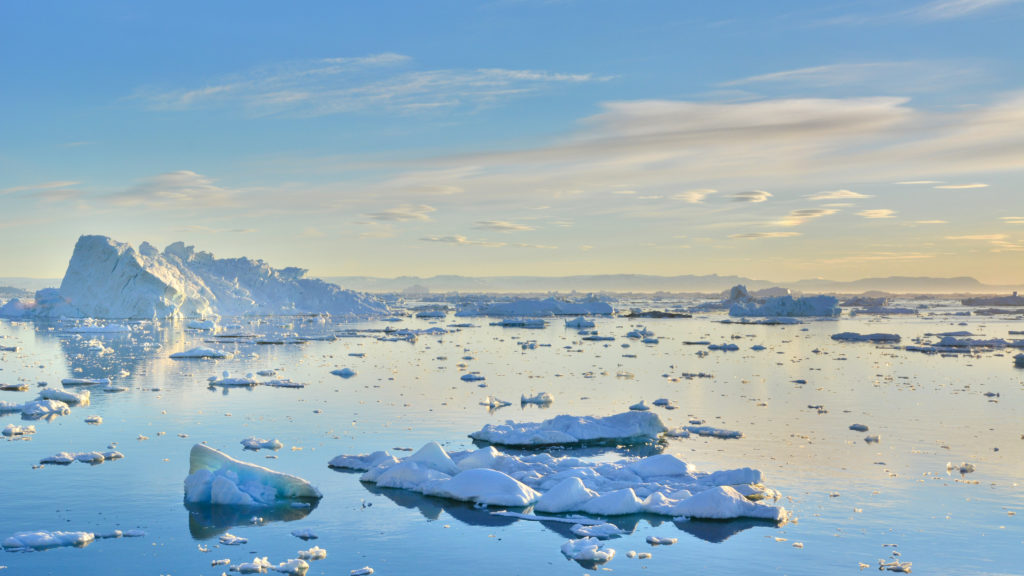
What is an ice sheet?
An ice sheet is a glacial ice covering more than 50,000 square kilometres. The Antarctic ice sheet is the largest single mass of ice on Earth. If this melted it’s thought that sea levels would rise by up to 60m!
Ice sheets form when snow that falls in winter doesn’t entirely melt in summer. Over time the snow accumulates and compresses to form ice sheets.
What is an ice field?
An ice field is an expanse of ice caps and glaciers.
Why are glaciers melting?
Glaciers have been melting since the beginning of the 19th century. Scientists think this is because of human activities, especially the burning of fossil fuels, which has increased the amount of carbon dioxide in the atmosphere, leading to global warming.
Projections show that over a third of the world’s glaciers will melt before 2100 even if we reduce carbon emissions.
We set up a very simple activity to demonstrate how melting ice caps and sheets lead to sea levels rising.
Melting Polar Ice Caps
Large Icebergs
A container
Water
Stones
Polar Animals
Ruler
Timer
We froze some ice caps using bowls filled with water and placed them in a large metal container.
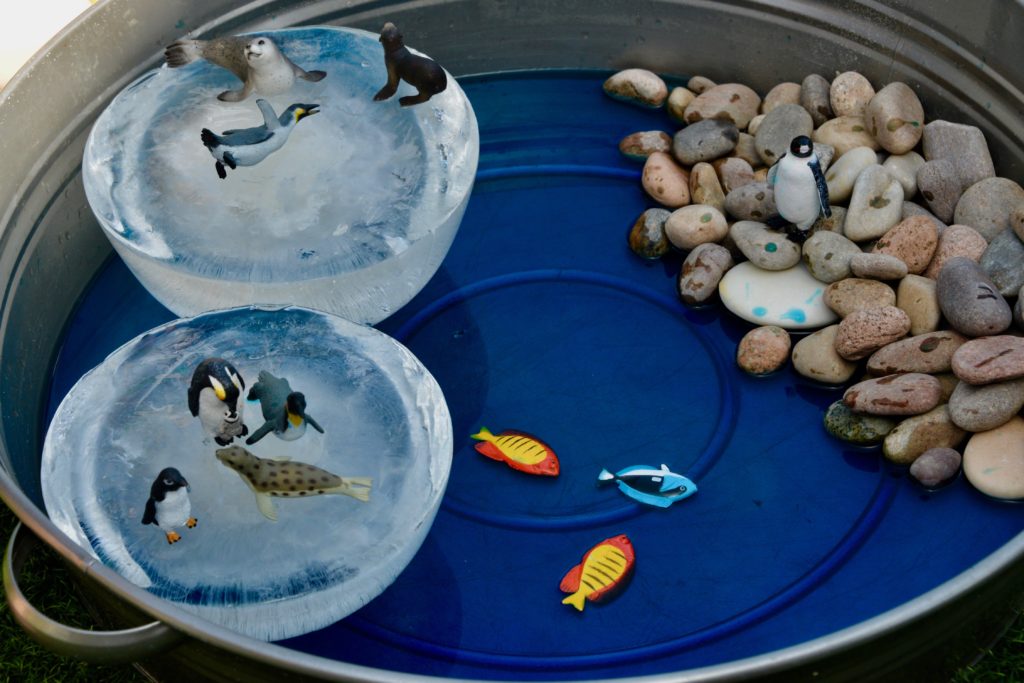
I added a bit of blue food colouring to our water, but this was purely decorative.
Children can design this investigation however they wish, but we measured the height of the water to start with and then every 20 minutes afterwards until the ice had completely melted.
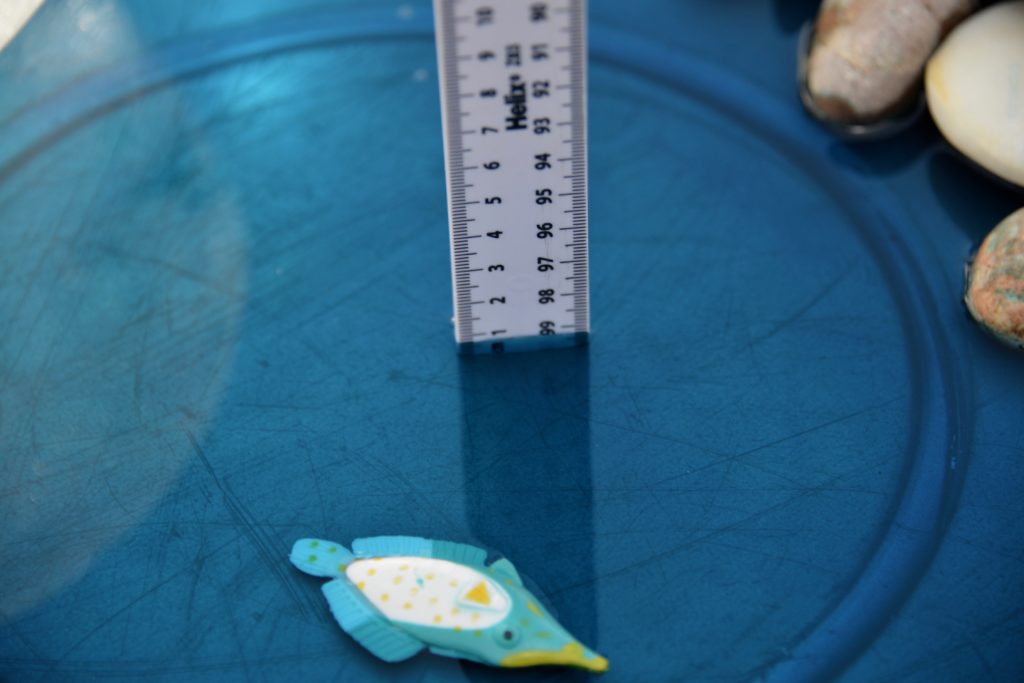
You can see how there was less space for the animals as the ice melted and how the water started to rise above the level of the land.
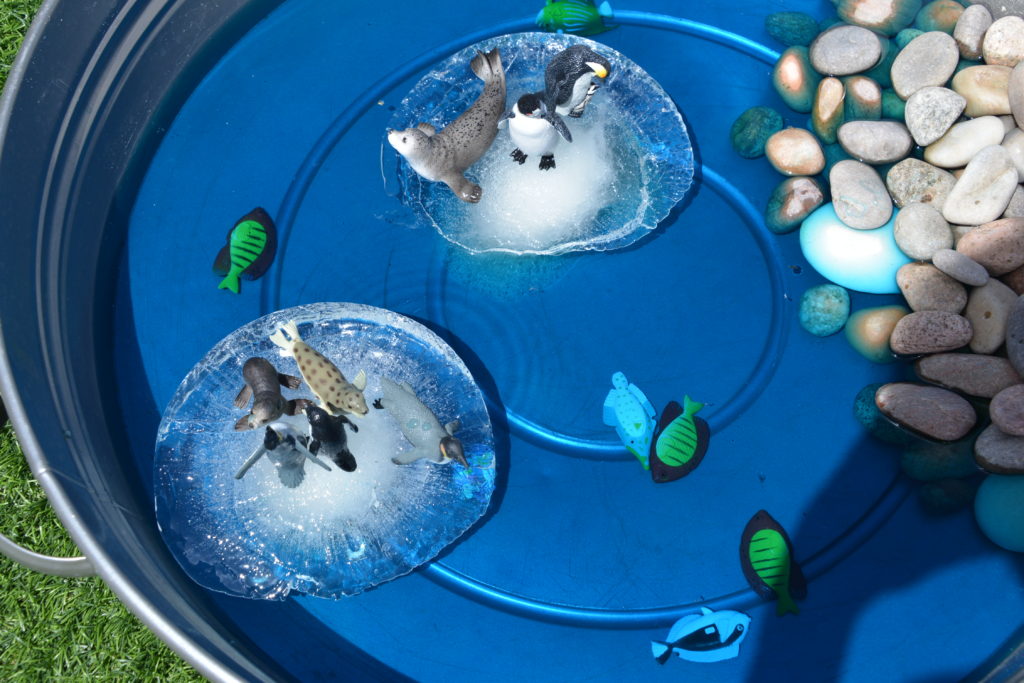
The final water level was significantly higher than the first.
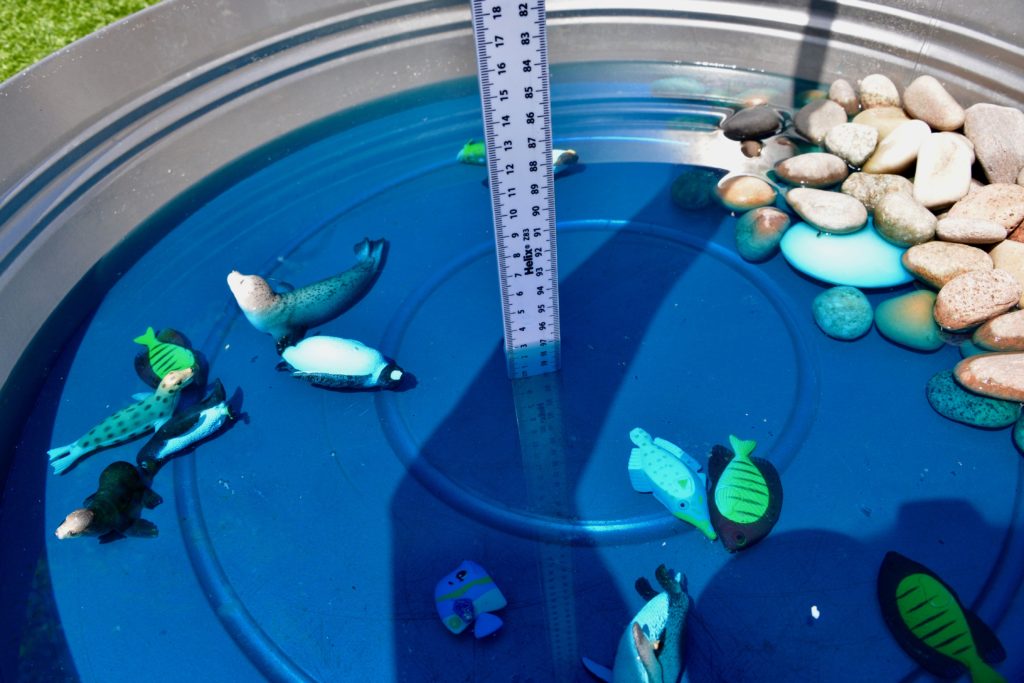
This activity is obviously dramatic and oversimplified, but it is a great visual demonstration of some of the consequences of melting polar ice caps and ice sheets.
More Climate Change Science Experiments
Model greenhouse gases with sweets.
Find out how cows contribute to global warming.
Try one of these easy climate change demonstrations.
Find out how to reduce your carbon footprint and make a pledge!
If you enjoyed this activity why not take a look at my complete collection of climate change activities for kids?
David Attenborough’s A Life on Our Planet is a wonderful read if you want to find out more.
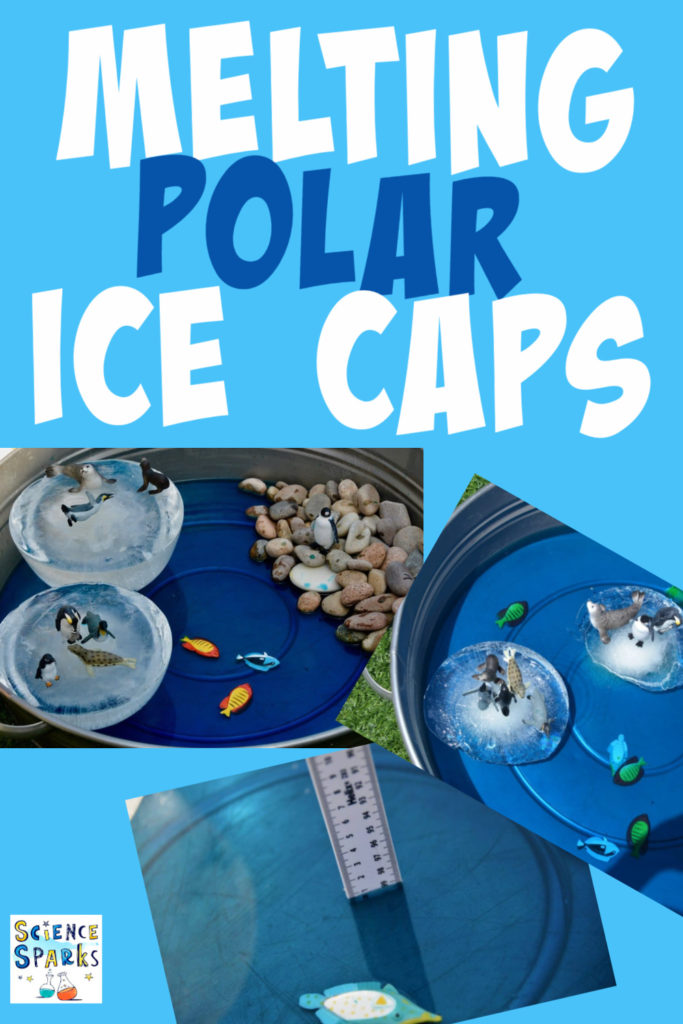
Last Updated on January 21, 2025 by Emma Vanstone

Leave a Reply